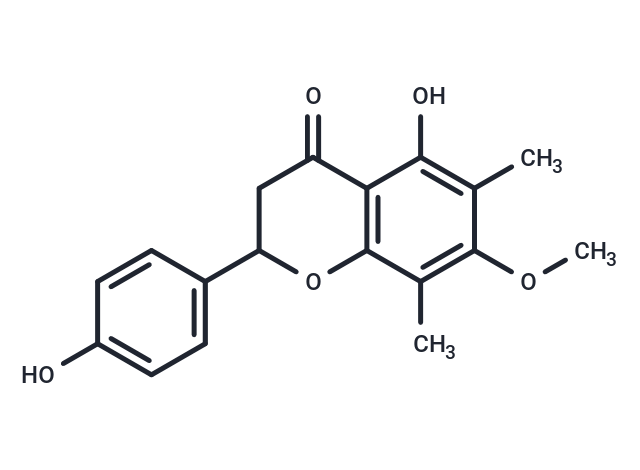Shopping Cart
- Remove All
 Your shopping cart is currently empty
Your shopping cart is currently empty

Angophorol is a flavonoid compound from the culm fern, Pterocarpus indicus, in the family Pterocarpaceae.Angophorol exerts potential anticancer activity through growth inhibition and apoptosis in K562 cells.1,2,3 Angophorol is a flavonoid compound from the culm fern, Pterocarpus indicus, in the family Pterocarpaceae.

| Pack Size | Price | Availability | Quantity |
|---|---|---|---|
| 5 mg | $2,398 | Backorder | |
| 1 mL x 10 mM (in DMSO) | $2,498 | Backorder |
| Description | Angophorol is a flavonoid compound from the culm fern, Pterocarpus indicus, in the family Pterocarpaceae.Angophorol exerts potential anticancer activity through growth inhibition and apoptosis in K562 cells.1,2,3 Angophorol is a flavonoid compound from the culm fern, Pterocarpus indicus, in the family Pterocarpaceae. |
| In vitro | Flavonones Angophorol was isolated from the leaves and stem of Miconia prasina. The anti-leukemia effect of the flavonones constituents of the Miconia prasina leaves was also examined in vitro, where the result showed that Angophorol exerts potential anticancer activity through growth inhibition and apoptosis in K562 cells. CONCLUSIONS: This is the first report of these compounds being isolated from Miconia prasina, and it is the first time to measure their anti-leukemia activity against two human leukemia cell lines, HL60 and K562, after a 48h exposure.[1] |
| Molecular Weight | 314.33 |
| Formula | C18H18O5 |
| Cas No. | 133442-54-3 |
| Smiles | O=C1C=2C(O)=C(C(OC)=C(C2OC(C3=CC=C(O)C=C3)C1)C)C |
| Relative Density. | 1.302 g/cm3 (Predicted) |
| Storage | store at low temperature,keep away from direct sunlight | Powder: -20°C for 3 years | In solvent: -80°C for 1 year | Shipping with blue ice. |

Copyright © 2015-2025 TargetMol Chemicals Inc. All Rights Reserved.